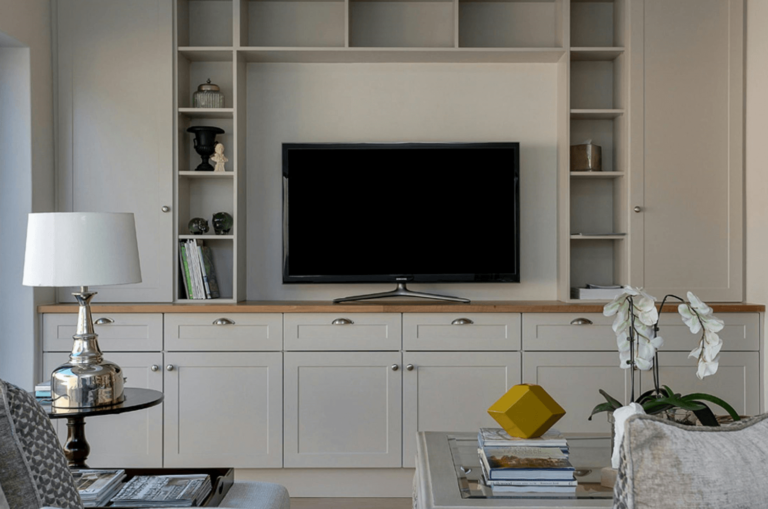Table of Contents
Transform your blank wall into an artful story that speaks of your life and style. Discover how simple steps and expert tips from interior design pros at the American Society of Interior Designers can help you create a beautiful gallery wall.
Blank walls are empty canvases that wait for your personal touch. A gallery wall turns these spaces into visual stories with art, photos, and unique objects. This guide uses expert advice to help you design a wall that shows off your memories and style.
Follow our simple, step-by-step advice. Use these tips to mix and match frames and photos to make your wall truly yours.
Understanding the Basics of Gallery Walls
What is a Gallery Wall?
A gallery wall is a group of framed items arranged neatly on a wall. These items may include:
- Art prints
- Family photos
- Posters
- 3D objects
- Mirrors
- Textiles
This design is versatile. You can choose a matching look or mix styles to suit your taste.
Why Create a Gallery Wall?
A gallery wall has many benefits:
- Personal Touch: It shows your favorite memories and art.
- Strong Impact: A well-made wall draws attention and brightens your room.
- Easy Update: Change photos or art as your style grows.
- Smart Use of Space: Fill large empty walls with charm.
- Storytelling: Show your life’s journey through art.
Planning Your Gallery Wall
Choosing a Theme
Pick a theme before you start. A clear theme brings order to your collection. Consider themes like:
- Family Memories: Photos and mementos from loved ones.
- Travel Stories: Maps, postcards, and journey photos.
- Art Lover: Paintings, prints, and sketches.
- Single Color: Items in one tone for a calm feel.
- Mixed Style: Combine different art styles for a unique look.
Remember, you can blend themes for a lively wall.
Selecting Your Wall Space
Choose a wall that fits your plan. Think about these points:
- Size: A larger wall helps you spread out your art.
- Lighting: Good light makes art shine.
- Furniture: Your art should play well with nearby pieces.
- Focus: Decide if the wall should be the room’s main star.
Gathering Your Pieces
Select items that speak to you. You can include:
- Paintings and prints
- Family or travel photos
- Mirrors to shine light
- Small sculptures and plants
- Tapestries or woven art
Try to pick a mix that surprises and delights.
Framing and Matting
Choosing Frames
Your frames set the tone for your wall. When picking frames, think about:
- Style: Use frames that match your room and art.
- Color: Neutrals like black, white, or wood fit most art.
- Size: Vary sizes for interest, but keep a balance.
- Material: Choose durable materials like wood or metal.
Matching frames give a calm look, while mixed frames add fun.
Matting Techniques
Mats can lift your art. Try these simple tips:
- White or off-white mats give a classic look.
- Colored mats add a pop of contrast.
- Double mats can look very refined.
- Mats help align various sizes.
Arranging Your Gallery Wall
Layout Planning
Plan your frame positions before hammering nails. Try these methods:
- Paper Templates: Cut paper to frame size and tape them on the wall.
- Digital Tools: Use simple apps to arrange your art.
- Mockups: Create a small-scale plan on paper or computer.
Common Gallery Wall Layouts
- Grid: Even rows and columns of alike sizes.
- Salon-Style: A creative mix of sizes and styles.
- Horizontal Line: Items in one long row.
- Vertical Line: A neat stack for narrow walls.
- Center Focus: Start with a big piece at the center.
Begin with a large item and build around it to keep balance.
Spacing and Alignment
Keep your frames evenly spaced. Here are a few ideas:
- Give 2 to 3 inches between frames.
- Align edges or centers for a tidy look.
- Use a level to keep frames straight.
- Step back and check your work often.
Hanging Your Gallery Wall
Tools Youll Need
Collect these tools before you start:
- Hammer
- Nails or hanging hooks
- Level
- Measuring tape
- Pencil
- Painter’s tape
Hanging Techniques
- Start in the Center: Hang your main piece first.
- Keep it Level: Check each piece with a level.
- Measure Twice: Confirm spacing as you work.
- Secure Heavy Pieces: Use anchors for large items.
You may use special adhesive strips that leave no holes if you prefer a neat look.
Maintaining and Updating Your Gallery Wall
Regular Maintenance
Keep your wall looking fresh by following these tips:
- Dust your frames and art often.
- Clean glass with a proper cleaner.
- Check that all pieces are secure.
Refreshing Your Display
Your gallery wall can grow with you. Try to:
- Rotate art every season
- Add new items as you find them
- Change the layout for a fresh view
- Test new themes or colors
Conclusion
Create a gallery wall that tells your unique story. Use the steps in this guide to plan, arrange, and hang your art with ease.
Your wall will be as unique as you are. Enjoy the creative process and let your personality shine. Remember, there is no single right way to design your space.
Ready to get started? Check out these essential framing and hanging tools to bring your vision to life: [Affiliate link placeholder]
As an Amazon Associate I earn from qualifying purchases.
Frequently Asked Questions
Q: How do I start my gallery wall?
A: Begin by choosing a theme, selecting a wall with good lighting, and planning your layout with paper templates or digital tools.
Q: What is the best spacing between frames?
A: A spacing of 2 to 3 inches between frames works well for a balanced look.
Q: Can I mix different frame styles?
A: Yes, mixing frame styles can create a dynamic and interesting display.
Q: How do I update my gallery wall?
A: Rotate art seasonally, add new pieces, or rearrange your display when you want a fresh look.
Explore this topic: DIY
Last updated on August 7, 2025








